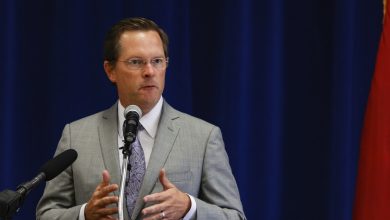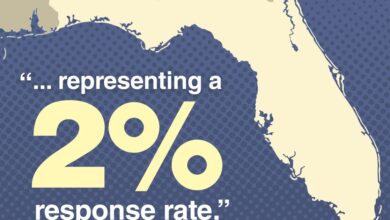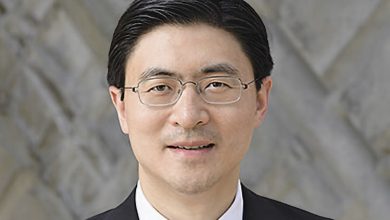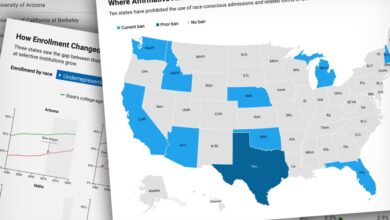At Ohio State, Trustees Will Do the President’s Job
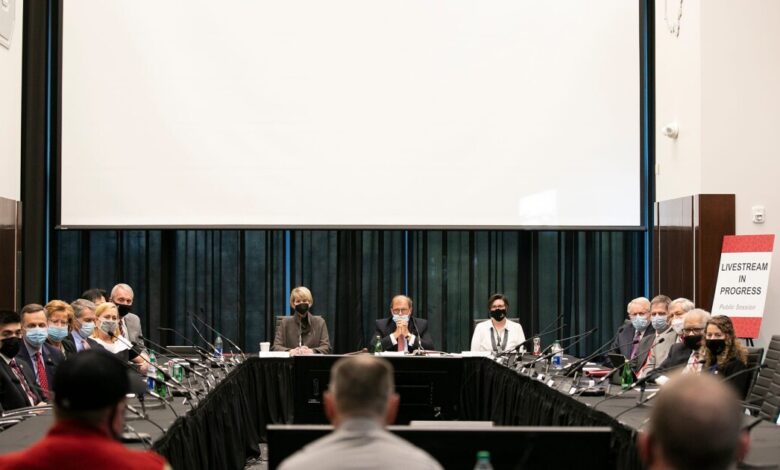
[ad_1]
On Monday morning, Ohio State University won’t have a president — either interim or permanent. Instead, cabinet-level administrators will report directly to the university’s governing-board subcommittees.
It’s a plan that has the faculty nervous about who is in control of the institution, and what it means for the future.
It also appears to violate the university’s bylaws, which state both that a president be in charge of the administration of the institution and that executive vice presidents report directly to the president.
“It’s as bizarre as it sounds,” said Jill Galvan, an associate professor of English and a member of the faculty union’s executive committee. “We’re in the dark. What’s going on Monday?”
The current president, Kristina M. Johnson, will preside over commencement exercises this weekend and depart the presidency on Sunday. She resigned suddenly in November, saying she would leave at the end of the academic year.
“I have fought for academic freedom and to protect the university’s right to decide which professors to hire,” she wrote in an essay published in local media in February. “University curricula must not be subject to political forces. Ohio State professors must be allowed to pursue academic research without fear or favor, and ideas must succeed or fail based on academic merit rather than their political appeal.
“In October, I realized my relentless pursuit of the agenda we’d set was no longer in step with what the majority of the trustees wanted.”
What are the checks and balances in place to thwart trustee influence that might do the day-to-day realities of the institution harm?
The university’s board started a search in February but has named neither an interim nor permanent replacement for Johnson.
Experts in college leadership said they can’t recall a similar plan being put in place at any other university. This one, they said, is problematic.
Ohio State’s bylaws on the administration of the university vest authority for the day-to-day running of the college with the president, stating that the position “shall be responsible for the entire administration of the university, subject to control of the Board of Trustees.”
That section outlines other administrative posts, like the chief financial officer and provost, and states in similar language that they report to the president. And the cabinet, it says, exists to “provide advice and counsel to the president.”
That places this plan in violation of the bylaws, said Judith A. Wilde, a research professor at the Schar School of Policy and Government at George Mason University who studies university presidents. In setting up the board in the president’s role, it changes the structure of the university, even if it is temporary.
“They have changed the role, or at least part of the role, of the board to management from governance,” Wilde said. “To which board member are the administrators reporting? Did each board member take a different assignment? What would take place if there was a crisis? Who is in charge?”
The board is most likely relying on the clause in the bylaws that places the presidency “subject to control of the Board of Trustees” to think it isn’t violating them, said Demetri L. Morgan, an associate professor at Loyola University Chicago who studies higher-education governance.
But there are no documents in board minutes showing any such decision being made, Morgan noted. And even if the move doesn’t violate bylaws, it still raises all sorts of issues, he said.
“As with many things in governance — it’s all about risk tolerance,” Morgan said. With Ohio State heading into the summer, without the majority of students on campus, without sports in session, with faculty off doing research and administrators used to doing much of the heavy lifting of the day-to-day operations, the board is gambling that nothing goes wrong, he added.
“I also worry about undue influence by trustees in the day-to-day operations,” Morgan said. “A president allows for some buffer and moderation between trustee desires and the day-to-day execution. And without that moat, what are the checks and balances in place to thwart trustee influence that might do the day-to-day realities of the institution harm? The senior admins can just as easily be let go. So I am wary, if this model is in place for a long time,” that the stopgaps “for situations to emerge that run afoul of a healthy dynamic start to erode.”
There’s also another side. Board trustees all are involved in other businesses and institutions besides Ohio State. Morgan wonders how much time they have to devote to the university.
“Striking the balance between involved but not in the weeds is hard even when a president is in place. So removing that role, even for a short time creates all sorts of weak points for things to go wrong — again — depending on how long this model is in place,” Morgan said. “I think they likely can get through the summer — but if this is still the model when football season starts and the semester is upon them — then my worry meter would grow substantially.”
[ad_2]
Source link


